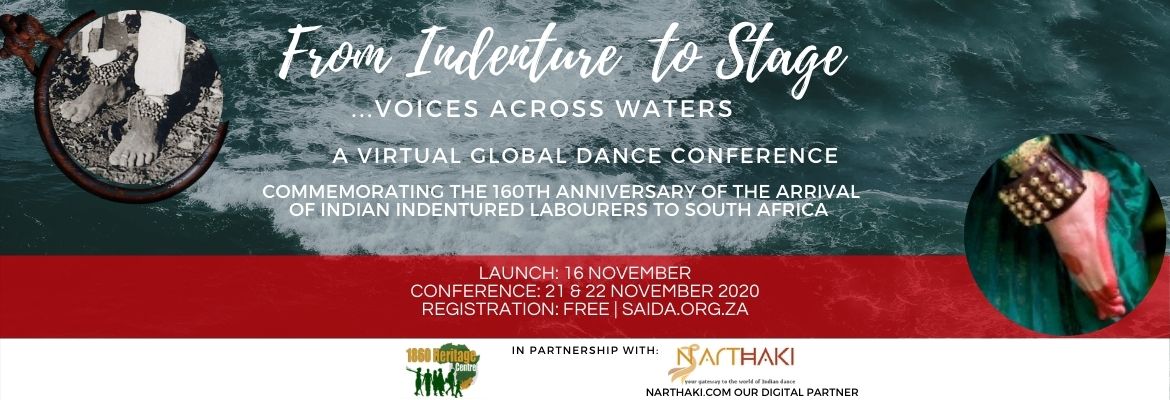Prof. Jay Pather
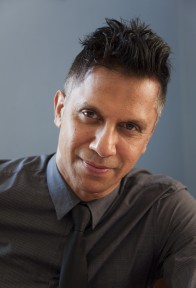 Prof. Jay Pather is a choreographer, curator and academic. He is Professor at the University of Cape Town where he directs the Institute for Creative Arts. He curates the Infecting the City Festival and the ICA Live Art Festival in Cape Town, the Afrovibes Festival in Amsterdam and co-curates for Body, Image, Movement in Madrid; Spier Light Art in Cape Town and the Africa 2020/21 Season in France. Recent productions include What Remains for which he won a Fleur du Cap award for Best Direction. Publications include articles in Changing Metropolis ll; Rogue Urbanism; Performing Cities; Where Strangers Meet; Routledge Companion to Art in the Public Realm; New territories: theatre, drama, and performance in post-apartheid South Africa and a book, Transgressions, Live Art in South Africa. A current publication is Restless Infections, Public Art in South Africa. He initiated the Live Art Network Africa, served as juror for the International Award for Public Art, as Board Member for the National Arts Festival, and was recently made Chevalier des Arts et des Lettres by the French Government.
Prof. Jay Pather is a choreographer, curator and academic. He is Professor at the University of Cape Town where he directs the Institute for Creative Arts. He curates the Infecting the City Festival and the ICA Live Art Festival in Cape Town, the Afrovibes Festival in Amsterdam and co-curates for Body, Image, Movement in Madrid; Spier Light Art in Cape Town and the Africa 2020/21 Season in France. Recent productions include What Remains for which he won a Fleur du Cap award for Best Direction. Publications include articles in Changing Metropolis ll; Rogue Urbanism; Performing Cities; Where Strangers Meet; Routledge Companion to Art in the Public Realm; New territories: theatre, drama, and performance in post-apartheid South Africa and a book, Transgressions, Live Art in South Africa. A current publication is Restless Infections, Public Art in South Africa. He initiated the Live Art Network Africa, served as juror for the International Award for Public Art, as Board Member for the National Arts Festival, and was recently made Chevalier des Arts et des Lettres by the French Government.
Dr. Smitha Radhakrishnan
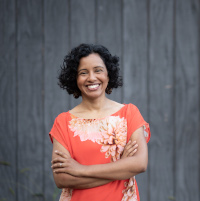 Dr. Smitha Radhakrishnan is LuElla LaMer Slaner Professor of Women's Studies and Professor of Sociology at Wellesley College. A lifelong Bharatanatyam dancer, Smitha founded NATyA Dance in Natick, Massachusetts in 2015 after three decades of training and performance. NATyA currently offers Bharatanatyam classes for all ages and supports NATyA Dance Collective, a collaborative Bharatanatyam ensemble group. Born and raised in the U.S., she has trained continuously with prominent Bharatanatyam teachers in the U.S. and India since age 5. She has performed in professional solo and group productions all over the United States. In South Africa, she has performed and taught with the Surialanga Dance Company of Durban. In 2003, she co-founded NATyA Dance Company with fellow dancer Vallari Shah. Over the next four years, they performed over 80 shows all over the California Bay Area, including four original productions. Since 2008, Smitha has been training in Bharatanatyam, contemporary dance forms, and Indian martial arts while performing with Navarasa Dance Theater. She currently serves on the Navarasa board and continues to train in Mysore style Bharatanatyam with Dr. Sindhoor.
Dr. Smitha Radhakrishnan is LuElla LaMer Slaner Professor of Women's Studies and Professor of Sociology at Wellesley College. A lifelong Bharatanatyam dancer, Smitha founded NATyA Dance in Natick, Massachusetts in 2015 after three decades of training and performance. NATyA currently offers Bharatanatyam classes for all ages and supports NATyA Dance Collective, a collaborative Bharatanatyam ensemble group. Born and raised in the U.S., she has trained continuously with prominent Bharatanatyam teachers in the U.S. and India since age 5. She has performed in professional solo and group productions all over the United States. In South Africa, she has performed and taught with the Surialanga Dance Company of Durban. In 2003, she co-founded NATyA Dance Company with fellow dancer Vallari Shah. Over the next four years, they performed over 80 shows all over the California Bay Area, including four original productions. Since 2008, Smitha has been training in Bharatanatyam, contemporary dance forms, and Indian martial arts while performing with Navarasa Dance Theater. She currently serves on the Navarasa board and continues to train in Mysore style Bharatanatyam with Dr. Sindhoor.
Dr.Nalini Moodley-Diar
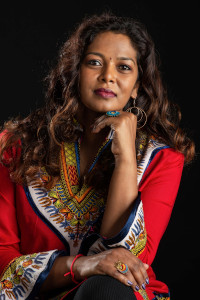 Nalini Moodley-Diar is currently the Executive Dean and Professor in the Faculty of Arts and Design at the Tshwane University of Technology, South Africa. She has a B.A (Fine Arts), M.A. (Art History) cum laude, a UPGCE and completed her PhD in Art History at the University of KwaZulu-Natal which focused on the visual art produced by Indian South Africans. She has been spent more than 28 years in the field of education across the sector from Primary, Secondary and Tertiary education. Her present areas of research include the politics of minorities as well as the complexities of race and identity politics within a transforming South Africa. Within this broad area she focuses on the challenges of being Indian in a post-apartheid South Africa while also engaging in projects that attempt to memorialise the history of Indian Indenture across the globe. In this regard she is a member of the International Scientific Committee for the memorialisation of Indenture across the globe. She has published papers in peer reviewed journals on Hindu art and artists in South Africa, Indian dance, and the multiplicity of positionalities of Indians in South Africa. She is currently the Chairperson of the Women In leadership Forum at the Tshwane University of Technology and is also engaged in research projects focusing on women leaders in higher education. Professor Moodley-Diar is currently engaged in numerous book projects within her fields of research. In addition she is also a Bharatha Natyam teacher having brought three students to complete their arangetrams.
Nalini Moodley-Diar is currently the Executive Dean and Professor in the Faculty of Arts and Design at the Tshwane University of Technology, South Africa. She has a B.A (Fine Arts), M.A. (Art History) cum laude, a UPGCE and completed her PhD in Art History at the University of KwaZulu-Natal which focused on the visual art produced by Indian South Africans. She has been spent more than 28 years in the field of education across the sector from Primary, Secondary and Tertiary education. Her present areas of research include the politics of minorities as well as the complexities of race and identity politics within a transforming South Africa. Within this broad area she focuses on the challenges of being Indian in a post-apartheid South Africa while also engaging in projects that attempt to memorialise the history of Indian Indenture across the globe. In this regard she is a member of the International Scientific Committee for the memorialisation of Indenture across the globe. She has published papers in peer reviewed journals on Hindu art and artists in South Africa, Indian dance, and the multiplicity of positionalities of Indians in South Africa. She is currently the Chairperson of the Women In leadership Forum at the Tshwane University of Technology and is also engaged in research projects focusing on women leaders in higher education. Professor Moodley-Diar is currently engaged in numerous book projects within her fields of research. In addition she is also a Bharatha Natyam teacher having brought three students to complete their arangetrams.
Dr. Gerard Samuel
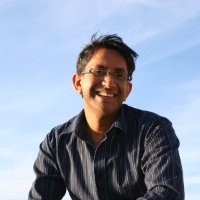
Dr Gerard Samuel is an Associate Professor: University of Cape Town, Centre for Theatre, Dance and Performance Studies and Head of CTDPS Dance Section. He is the Convener: Post Graduate studies in Dance, Editor: South African Dance Journal, and Chair of Confluences a biennial, international dance conference hosted by UCT.
During the Apartheid era he performed with the NAPAC Ballet Company and The Playhouse Dance Company in Durban. He held senior management posts for The Playhouse Company, until 2006. His notable choreographies include Prabhati and The Man I Love. He received the Durban Theatre Awards in 2006 for The Sound of Music.
Gerard has produced Place of Grace, a dance film in 2011. He is an advocate of disability arts in South Africa and in Copenhagen
He obtained his PhD for a thesis entitled - Dancing the Other in South Africa from UCT, in 2016 in which it was announced that “ Gerard Samuel’s thesis makes a highly significant intervention in Dance and Performance Studies in terms of its original argument about how the category of ‘age’ is used [as] part of ‘othering’ process… coining the term ‘body-space’ as a theoretical tool to observe bodies and dancing as states of becoming”.
Dr. Anita Ratnam
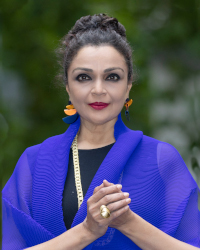
Anita R Ratnam is best described as an" intersectionist", whose work weaves the many disciplines of dance, theatre, spoken word, ritual, dramaturgy and women's issues. Her formal training in Bharatanatyam, Mohiniattam and Kathakali along with her educational background in English Literature, Dance, Theatre and Women’s Studies have given Ms Ratnam a unique movement vocabulary.
Awarded on multiple occasions for her work in Television, Theatre, Dance and Arts Entrepreneurship, Anita Ratnam has also received the national Presidential medal for Contemporary Dance in 2017. A passionate animal lover. food enthusiast and World traveller, Anita in her own words “lives every day to its fullest potential“
Dr Anita R Ratnam, based in Chennai (Madras) , India, is highly respected as a performer, writer, speaker and arts entrepreneur and culture mentor. She has been described as an "intersectionist", whose work weaves the many disciplines of dance, theatre, spoken word, ritual, archaeology, dramaturgy and women's issues. For over 40 years, her distinguished career has witnessed over 1300 performances in 37 countries. Her formal training in Bharatanatyam, Mohiniattam and Kathakali has given Dr Ratnam a distinctive movement vocabulary that she has named NEO BHARATAM - a contemporary Indian kinetic situated on a mature body. Using voice, singing, Vedic hymns, drumming, contemporary mythology and devised movements, her acclaimed choreographies include GAJAANANA, DAUGHTERS OF THE OCEAN, SEVEN GRACES, MA3KA, A MILLION SITAS and NEELAM.
Dr Ratnam served as a member of the Executive Board of the Sangeet Natak Akademi, India's largest apex body for the performing arts, and the ICCR, India's Government panel to select performers for international tours. She is a fellow of the World Academy of Arts and Sciences, and a voting member of the Dance Critics Association, USA. She is a visiting professor in several international universities in the USA like University of California, Irvine and Riverside, Wesleyan University, George Washington University and Rice University. Ratnam is also a professional storyteller whose work has been invited to several museums like National Museum, New Delhi and Peabody Essex Museum, USA. . Dr Ratnam is currently the Vice President of ABHAI the Chennai based arts organisation that represents the Bharatanatyam dancers of India.
Ratnam is the co-editor of the Cambridge Publishers international imprint VOYAGES OF THE BODY, a collection of essays and performance notes based on two feminist conferences that she curated and produced.
Dr Ratnam's background as a television producer in New York City (1980 to 1990) as well as her educational qualifications in Dance, History, Theatre and Women's Studies (MA and Phd) have made her a popular speaker for diverse audiences. She has been repeatedly honoured for furthering the profile of Indian dance. As a mentor, Dr Ratnam is currently mentoring actors and dancers in a pioneering national project called PADME as well as on the Advisory board of ADISHAKTI the theatre laboratory in Pondicherry. An ardent supporter of new initiatives, Ratnam has supported various independent organizations and solo artistes working in creating a fresh new performance aesthetic for today’s India.
As a cultural entrepreneur, Ratnam has founded Narthaki.com, the largest portal on Indian dance on the world wide web and restored the 15th century theatre ritual performance of KAISIKA NATAKAM in her ancestral village temple of Tirukurungudi in Tamilnadu. She has also conceived, produced and curated numerous conferences and dance festivals for 25 years; the most notable are THE OTHER FESTIVAl, India’s first annual contemporary dance festival, and international dance and theatre seminars OLD TEXTS NEW TEXTURES (1994) PAST FORWARD ( 1999) ANCIENT FUTURES (2000) MAD AND DIVINE (2010) , EPIC WOMEN (2012) AND PURUSH (2013)
A sought after speaker on the arts, culture and women's issues, Dr Anita Ratnam divides her time between her home in Chennai India and the rest of the world where she travels frequently furthering the international profile of Indian dance.
Moderated conversation
Jatinder Verma
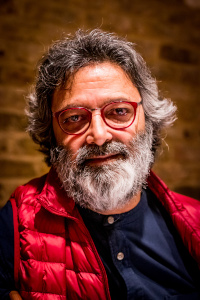 Jatinder grew up in Kenya and arrived in the UK as part of the "Exodus" of Kenyan Asians in February 1968, aged 14. He founded theatre company Tara Arts in 1977 as a response to the racist murder of a young Asian. During his four decades as Artistic Director of Tara Arts, Jatinder developed a unique approach to theatre – adapting Asian dramaturgical principles to European drama. An approach which he has termed "Binglish".
Jatinder grew up in Kenya and arrived in the UK as part of the "Exodus" of Kenyan Asians in February 1968, aged 14. He founded theatre company Tara Arts in 1977 as a response to the racist murder of a young Asian. During his four decades as Artistic Director of Tara Arts, Jatinder developed a unique approach to theatre – adapting Asian dramaturgical principles to European drama. An approach which he has termed "Binglish".
This approach characterised a range of productions, including Moliere's Tartuffe, which he staged at the National Theatre in 1990 - in the process becoming the first-ever non-white director to work at the National.
In 2002, Jatinder staged an epic trilogy of plays about Asian migration, Journey to the West. And in 2016, opened Britain's first multicultural theatre, fusing Edwardian brick and Indian wood to create Tara Theatre.
Since stepping down from Tara Arts in 2019, he has formed his own company - JVP - with designer Claudia Mayer.
Jatinder was awarded an MBE for services to diversity in the arts.
Chitra Sundaram
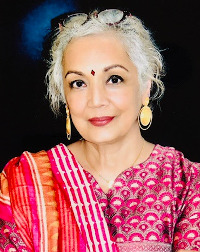 Chitra Sundaram is a dance-theatre educator and researcher, an actor trainer, dramaturg, mentor, and more rarely now, a performer and choreographer. she is Associate Lecturer, Department of Drama and Performance at Goldsmiths College, University of London, UK.
Chitra Sundaram is a dance-theatre educator and researcher, an actor trainer, dramaturg, mentor, and more rarely now, a performer and choreographer. she is Associate Lecturer, Department of Drama and Performance at Goldsmiths College, University of London, UK.
Chitra’s performance works, teaching and inquiry reflect her robust form-based questions as well explorations in other dance/theatre forms and intellectual premises. Her critically acclaimed creations include: the subversively classical solo work ‘Moham – A Magnificent Obsession’ in bharatanatyam; the site-specific mixed- genres ensemble ‘Awaaz/Voice’ for Trafalgar Square festival; the social critique of ‘Sthreedom – The Good Wife’; a contemporary take on a grotesque Hindu myth in ‘Ahmas – The Immortal Sin a.k.a Skull’, commissioned by the Royal Opera House’s ROH2 programme, which toured the UK with Soma Numa, and showed internationally. Chitra’s more traditional ‘Pashyamey – Behold Me!’ premiered at the South Bank Centre’s Alchemy Festival and was shortlisted for British Dance Edition (BDE). In the ‘80s, Chitra co-created and toured ‘Visions of Rhythm’ with South- African origin Corrine Bougaard (Founder, Union Dance Company), as one of the earliest “fusion” works in the UK.
Chitra’s research and teaching interests include the problems and potential of classical forms in cross-cultural and intergenerational transmission of cultural narratives; the effects on dance of the neo-nationalist project in India as post-truth ‘facts’ including its ‘classicism’ and ‘religiosity’ versus the proven aesthetic secularism of the texts invoked; the contemporary, western ‘realism’ and individual- based project of ‘authenticity’.
Chitra was a long-time editor of Pulse, Kadam UK’s South Asian dance (now also music) magazine, bridging academia, practitioner and dance aficionado, acquiring for Pulse critical international standing and subscription.
Chitra was Trustee and Member Governing Council of the international dance certification body, the ISTD. A 110-year old august institution of dance teachers. Chitra strongly resisted, and still resists, the use of the term ‘Imperial’ as she is now anointed an ISTD Fellow in recognition of her services. Chitra was elected Fellow of the Royal Society of the Arts (FRSA) years ago but has recently neglected to pay her dues in time, trusting automatic bank debit – and is wondering about renewal and what ‘Royal’ means or should mean to British colonials and post-colonials, and what disjointed individual protests may achieve here, if anything useful to others.
Highlights and reflections
Highlights and reflections on childhood memories, perspectives and experiences on dance training, experience, exposure and access to creative forms of expression that continue to influence the kinetic poetry in my dance.
Musa Hlatswayo
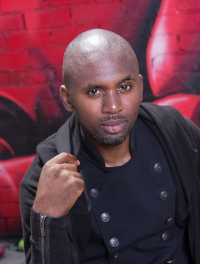 Musa Hlatshwayo was born and raised in Maphumulo; a rural area not far from King Shaka ’s grave in KwaDukuza. He is a performing artist, choreographer and creative/artistic director of his own company; Mhayise Productions. Some of his major achievements include the Standard Bank Young Artist Award for Dance for the year 2018, an honorary Award ‘The Eric Shabala Dance Champion Award’ by the CCA and Jomba in recognition of his contribution to the development of dance in KZN, KZN Dancelink’s Choreographer of the Year in 3 consecutive years, and extensive tours in Africa, Europe and America. Musa holds a BA Honours in Performance Studies (UKZN), an undergraduate certificate in Contemporary Dance and Choreography from the Copenhagen School of Modern Dance and a post-graduate certificate in Dance in Education from UKZN. His work is studied in various tertiary education and training institutions where he continues to appear as a guest lecturer, exam moderator and creative researcher. Musa’s speciality is in researching creating, staging and producing cutting-edge and socially-conscious contemporary dance theatre and environmentally friendly multidisciplinary site-specific work. He also facilitates engaging creative workshops in arts festivals, schools and alternative or creative learning spaces where he fuses Afrocentric (conventional and non-conventional) approaches to performative contemporary and cultural and artistic expression that sees voice and body as one.
Musa Hlatshwayo was born and raised in Maphumulo; a rural area not far from King Shaka ’s grave in KwaDukuza. He is a performing artist, choreographer and creative/artistic director of his own company; Mhayise Productions. Some of his major achievements include the Standard Bank Young Artist Award for Dance for the year 2018, an honorary Award ‘The Eric Shabala Dance Champion Award’ by the CCA and Jomba in recognition of his contribution to the development of dance in KZN, KZN Dancelink’s Choreographer of the Year in 3 consecutive years, and extensive tours in Africa, Europe and America. Musa holds a BA Honours in Performance Studies (UKZN), an undergraduate certificate in Contemporary Dance and Choreography from the Copenhagen School of Modern Dance and a post-graduate certificate in Dance in Education from UKZN. His work is studied in various tertiary education and training institutions where he continues to appear as a guest lecturer, exam moderator and creative researcher. Musa’s speciality is in researching creating, staging and producing cutting-edge and socially-conscious contemporary dance theatre and environmentally friendly multidisciplinary site-specific work. He also facilitates engaging creative workshops in arts festivals, schools and alternative or creative learning spaces where he fuses Afrocentric (conventional and non-conventional) approaches to performative contemporary and cultural and artistic expression that sees voice and body as one.
Reframing Indian Classical Dance In South Africa Through The Lens Of The Nydoo Sisters’ Family Dance Archive And Lived Experience, Over Sixty Years
Archives are the monuments to who we are and inform where we are headed. They are not just inanimate objects, but can also reside within human memory. Our own documentation, preservation and digitisation of archival material serve as cultural repositories for future generations to be educated by. The sixty-year old family dance archive that I curate has been exactly that for me and the generations of students from our dance institution. This paper is based on my MA thesis titled “My Mother Dances in Me: A History of South Asian Dance by South African Indian Women Through the Lens of a Family Archive as a Lived Experience” (2019). It became my mother’s posthumous voice, and has scaffolded my current PhD aspirations in exploring the journey from material to the embodied. We are all archives- how we present and preserve that knowledge is significant. It is my inheritance, which I share in the form of several practical and anecdotal lessons. It is hoped that our individual experiences can enable current and prospective dance exponents to re-story their careers and contributions to the knowledge base of the future in a similar manner.
The archive evidences the influence of the Indian film industry on the choice of my family to commence their sojourn to India in 1959/60. To many classical dancers the term “Bollywood” is sometimes considered as “blasphemous” when viewed through a traditionalist or purist lens. The irony is that in my family lineage the Indian film industry became the catalyst that inspired my mother and aunt to want to study dance. The popularity and music of “Bollywood” served as a useful teaching tool when bridging the cultural divide between young people in South Africa and the “alien” format that classical dance training presented.
By establishing a teaching institution, the Nydoo Sisters attempted to avert a situation that we currently find ourselves in. As an Indian dance community we are performance heavy, which is a salutation to the dancers of yore, however, we also need to focus on knowledge transfer with equal vigour. When my mother and I were studying dance in India there were no degrees conferred in the field. The first time this was offered in India itself was in 1986, by which time I had already completed my Odissi training.There is still a dearth of Indian dance presence in the academy in our own country of birth. The ICCR has enabled the local youth to take greater strides since the 1990s, however, collaboration between local universities and those based in India will most certainly see the numbers of trained, as well as academically sound exponents and teachers increase in the local academy. We should not have to leave our country to appreciate, honour and embed our heritage and memory in our Diasporic homes.
We are limitless – so why is it that we limit ourselves by dogma? There is an abundance of examples of how learning from India was reconfigured into a South African-friendly format. This was from the point of view that dance was a form of communication, and we the translators. There is the sisters’ unique performance programme that included their eldest sister Radha, the first recorded India-trained woman, Veena player in South Africa, and the first documented national Indian dance tour of South Africa in 1962, performing at all the major cities and areas with Indian Diaspora presence. They also dared to cross the Indian vernacular divide by studying Kathak in 1965, not much of an issue today, however at that time, and for more than a few decades thereafter, it was not in vogue. They saw all art as their playground and revelled in it by studying other art forms to inform their dance practice, a characteristic that I applaud.
Interdisciplinarity is essential for expansion and longevity. The dance community needs to embrace the introduction of more of the eight recognised classical dance styles of India into our local dance menagerie. Our individual ambits of knowledge should not be the yardstick by which we measure the abilities of other exponents of styles that we have either not been exposed to or received training in. Fortunately the current dance community has the benefit of Google, YouTube, facebook and other online platforms that have shrunk the international dance community to the size of a screen. That is something that a few generations removed were not able to benefit from.
When we consider our cultural heritage in the context of now, we need to acknowledge that the prolonged lack of diplomatic and therefore cultural ties with India is what sets the South African Indian Diaspora apart from their counterparts in other parts of the world. It has led to confusion in our interpretation of tradition, religion and culture. The earlier “scouts” were left to their own devices and adapted by trial and error thus allowing the current dancers far more confidence and skill with the benefit of their wisdom.
When considering and addressing issues of diversity, history, socio-political identity, cultural heritage, and the status of dance and its challenges in your country inter alia, our linear historical narrative requires reframing. “The superficial scramble for cultural diversity is not addressing the deep causes of exclusion and the power imbalance in the arts.” (Tania Canas, 2017). While my family was the object of the echoes of exoticism that the dance form still experiences today in this country, they strived to include and acknowledge artists of different cultures and art forms in their performances. The assortment of posters and programmes preserved in the archive provide substantial evidence of this. It also goes on to reveal the first documented Black South African exponent of Kathak in South Africa as our protégé. Their historical contribution has evolved with the arc of time to originate several aspects of Indian dance within the South African creative sector, to remain contemporary yet rooted in the passion for an ancient art form- Indian dance.
Dance has been a vehicle for positive change in South Africa. We have witnessed the upsurge of integration of culture, which is a contentious area in terms of arts, culture and dance in particular. I have witnessed sharing and exchange, create understanding and empathy however it is by no means a magic wand. “Without rethinking terms we run the risk of already ‘othered’ voices becoming further tokenized through the diversity discourse, rather than the lack thereof. We create disposable voices, restricted to exist within the same power structure that excluded them in the first place.” (Canas, 2017) (italics in original). The more I expanded my dance repertoire of dance styles, the more gravitas and depth was experienced in my performance and teaching practice. This was also amplified as a result of learning from my students and peers of other cultural and dance persuasions.Therefore those practitioners who have experienced success in this field should contribute to the Indian dance academy and knowledge base in South Africa.
‘…the arts must apply community-engagement methodologies, not with the aim of building audiences but building and strengthening community. It is not working for community, and sometimes not even with but as community, exemplifying a praxis of a “nothing about us, without us.”’ (Canas, 2017) (italics in original). Complacency is a killer of progress, as is a sense of entitlement. We are constantly navigating between the two. In reframing our narrative, the focus should be on thriving rather than merely survival. The past can and should impact present action and inform future directions. In encouraging every dancer to create their own narrative, from my research and experience, I have a list of “motivators” to consider as Indian dance makers and practitioners. Our stories and memorabilia could empower our protégés to respond to the challenges that they are inadvertently going to face - a beacon of sorts.
Anusia Govender-Pillay
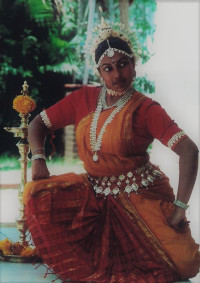 Anusia (Govender) Pillay is the curator of a family Archive on South African Indian Dance history, the Classical genre in particular, that has survived fires, floods, relocation and immigration. Portions of the archive were copied and stored at the defunct Documentation Centre at Derby Street, before it transformed into the 1860 documentation Centre, as well as, at the Gandhi – Luthuli Documentation at the erstwhile University of Durban-Westville. Most recently, in 2019, it has been documented in her MA Thesis (Film, Theatre and Performance) titled: “My Mother Dances in Me: A history of South Asian Dance by South African Indian women through the lens of a family archive as a lived experience”, at the University of the Witwatersrand. Her MA now serves to scaffold her current PhD studies at the same university. She holds an Honours degree in Social Work from Natal University (1993)and is a trained Early Childhood Development teacher. Her professional career spans over 35 years. She has written syllabi in Indian Classical and Folk dance for implementation at at secondary school and technical college levels for NED and GDE. She is currently a sessional lecturer in Theatre Making, Visual Arts performance and tutors Critical Thinking students in the Engineering and Architecture faculty at Wits University.
Anusia (Govender) Pillay is the curator of a family Archive on South African Indian Dance history, the Classical genre in particular, that has survived fires, floods, relocation and immigration. Portions of the archive were copied and stored at the defunct Documentation Centre at Derby Street, before it transformed into the 1860 documentation Centre, as well as, at the Gandhi – Luthuli Documentation at the erstwhile University of Durban-Westville. Most recently, in 2019, it has been documented in her MA Thesis (Film, Theatre and Performance) titled: “My Mother Dances in Me: A history of South Asian Dance by South African Indian women through the lens of a family archive as a lived experience”, at the University of the Witwatersrand. Her MA now serves to scaffold her current PhD studies at the same university. She holds an Honours degree in Social Work from Natal University (1993)and is a trained Early Childhood Development teacher. Her professional career spans over 35 years. She has written syllabi in Indian Classical and Folk dance for implementation at at secondary school and technical college levels for NED and GDE. She is currently a sessional lecturer in Theatre Making, Visual Arts performance and tutors Critical Thinking students in the Engineering and Architecture faculty at Wits University.
Anusia is also the Executive Director of Anavarata Dance Institute (044-238-NPO), a community based Non-Profit Organisation in the townships of South Africa involved in free training, and learnerships for the Youth. At 59 years old – it the oldest organisation on the African Continent, of Indian and World dance, they are also UNESCO (CID) Council of International Dance members.
As the daughter of the first recorded South African teacher of South Asian classical dance, Luxmidhevi (Rani Nydoo) Govender, she has studied most of the 8 Indian classical dance styles to varying degrees, with emphasis on Bharata Natyam, Kathak and Sufi kathak, as well as Odissi. Her additional training includes Modern Dance and Jazz under Vera Pickering, Ballroom and Latin American dance (under various teachers) and Drama under Saira Essa. Anusia was selected as the first South African Trainer and Principal Dancer of the official Malaysian Cultural Dance troupe in S.A and received training by in Kuala Lumpur in 2001. She is passionate about African and South African Dance styles. She worked on two of Disney’s productions in South Africa namely the “The Lion King” in 2006/7 as head of “Cub School” for the child artists, “Beauty and the Beast” in 2008/9; and taught at the National Children’s Theatre. Her area of interest is in integrating her repertoire of dance styles with other artistic genres to create a new and fresh flavor to her dance making.
Woman of Wonder Awards 2015 For contribution to Arts and Community Development 2. Book inclusion: “1000 Inspirations” by Fakir Hassen 2014 Inclusion in a Book on the achievements of South African Indians in 20 years of Democracy. Anavarata is featured as the oldest Indian Dance based organisation in South Africa 3. Bollywood Centenary Celebration awards 2012 For Anavarata’s contribution to the Local Film industry in the Bollywood genre 4. Won Award from ConsulateGeneral, India 1998 Celebration of 50 years of India’s Independence 5. Gorée Island Pilgrim Award _________________________ 6. Book inclusion: “The Red Fort Declaration: The Legacy 20 years on” by Fakir Hassen 7. Tamil Business Warriors Artist Award 8. POLICIES INTO PRACTICE: CHARTERING ARTISTS’ RIGHTS WEBINAR, 7 August 2020 2016 _______ 2018
2019
2020 Gorée Island Diaspora festival ______________________________ Launched at India – South Africa Business Summit at Sandton Convention Centre
Contribution to South Asian Arts in South Africa https://www.im4thearts.org.za/policiesinto-practice-chartering-artists-rights/
Repertoire: INDIAN : Bharata Natyam; Kathak( incl. Sufi ); Odissi; Kuchipudi; & Indian Folk & Ethnic Dance BOLLYWOOD: North & South Indian; Afro-integration SOUTH EAST ASIAN: Chinese; Indonesian: Malaysian; Thai; Japanese: Belly dance; Sri Lankan AFRICAN: Ethiopian; Mozambiquan; Batswana; Zimbabwe; Nigeria; Mauritius SOUTH AFRICAN: Afrikaner Volkspele; Sesotho; S’Pedi; Shangaan; Amampondo; Gumboots; Kaapse Klopse; Pantsula; Zulu; Kwasa Kwasa OTHER STYLES: Latin American; Ballroom; Jazz; Contemporary; Hip Hop; Salsa; Portuguese: French; Nordic; Polynesian INTERCULTURAL DANCE: regularly commissioned to create special and unique inter-cultural, and inter-faith pieces
Importance of Classical arts coupled with spirituality and developing oneself for inner artistic excellence
a- I will be addressing the points in context to our diverse culture, we are a Diaspora, it's important to understand the Indian context of arts in India in contrast to South Africa, being in a western society how do we unfold into our own way of understanding and representation of arts. how do we unfold the true standard of art in a western society, what are the implications, challenges we as a Diaspora face moving forward in a western society.
b- Culturally identifying internally is important, I will talk about the importance of roots, and the importance of artistic growth. I will be highlighting the importance of creating an accurate artistic culture for art apposed to being involved in the society culture. it's important to understand culture more than to just practice the perception of cultural heritage.
c- how do we move forward positively, I will address the spirituality of art. arts education, how do we cultivate a society for positive change in a way to uphold or exponentially increase artistic excellence
Here I will share some experiences. compare and contrast
d- traditions in foreign context should not be re-mixed or confused, it's about knowing classical art, finding the understanding from the roots and building forward, knowing the source well and exposing through education, importance of understanding Indian Dance Literature in a classical context . through academics, we can improve and be on the same understanding as foreign art forms.
Here I will share some concepts and discuss some Indian dance artist breaking the norms of Indian classical society, "lead by example" will share thoughts of my Interview's conducted.
e- The importance of bollywood, how bollywood popularised classical arts, how cinema played a huge role in the South African Diaspora.
Will discuss the importance of art moving forward with multiple forms, allowing the Diaspora to realise there is no "segregation" when it comes to dance, how do we see art moving forward, what needs to happen in order for art to grow and thrive, what needs to be done in the country.
Niveshan Munsamy
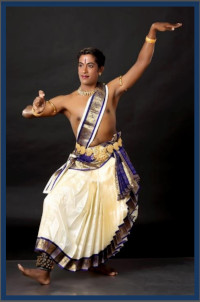 MPA Kuchipudi/ BA Carnatic music
MPA Kuchipudi/ BA Carnatic music
Niveshan Munsamy is born in a family steeped in culture, his great great grandparents TM Bakium Pillay & great grandparents AN Marie Pillay were doyens in the field of Music, Dance & Drama in South Africa. At the tender age of 4, he was initiated to music and dance by his parents Collin & Kantharuby Munsamy. He was chosen, as South Africas "Child Star" on SA Television together with his twin brother Nireshan. Niveshan joined The Bharatha Swara Institute under Shri Magentharen Balakisten for music and Bharatha Natyam with his sister Strimathi Yshrene Moodley, a Kalakshetra alumni -Chennai. He also studied Kathak Dance at the Kala Darshan Institute of Fine Arts under the guidance of Shri Manesh Maharaj.
At Kala Darshan Niveshan had the opportunity to perform in multiple of the school’s productions leading to his debut solo performance where by completing his kathak graduation all under the able Guidance of Guru Sri Manesh Maharaj “The Rangmanch Pravesh”.
He toured India twice, performing in 2 dance Drama’s, Mahatma Gandhi’s Salt March“Satyagraha” and The South African “Soweto Uprisal” of Nelson Mandela at the Ryans International Childrens Festival in New Delhi. After achieving a Diploma in Audio Sound Engineering from SAE College in Cape Town., South Africa, Niveshan and his twin Brother were awarded a scholarship, by the Indian Council for Cultural Relations-(ICCR), New Delhi to continue their music careers in India which he completed with Strimathi Subalakshmi Muthusamy of the Luxmi Narayana Institute. He also attained an Undergraduate B Music Degree at the Madras University in Chennai. He is currently a disciple of Dr. Vijayluxmi Sivakumar for Music.
Being passionate about dancing Niveshan enrolled at the Shivamohanam Institute, “The Abode of Kuchipudi dance” with the renowned dance duo "The Mosalikantis", Shri Jaikishore & Srimathi Padmavani Mosalikanthi. During 2017 he performed alongside his internationally acclaimed Gurus at various prestigious festivals, some of which includes the Madras Music Academy. In 2018 Niveshan had presented his Kuchipudi Debut recital to live orchestra in South Africa, accompanied by his Revered masters “The Mosalikanti’s” His “Ranga Pravesam” the Kuchipudi dance Graduation Niveshan also has attained his Masters Degree in Performing Arts specialising in the Kuchipudi dance form, qualifying with a distinction, this further broaden his understanding of dance scripture, literature and Kuchipudi dance on the field of academics.
Keeping with the purpose and need for holistic studies, Niveshan pursued studies in the spiritual arts of Ashtanga yoga at the “YogaVriksha” institute of yogic studies - Chennai under the able guidance of Srimathi Varsha Venkatesh. Niveshan wishes to educate himself with the advanced studies of Kuchipudi Dance so that he can add to the upliftment, promotion and propagation of this Art form in South Africa and around the world. Niveshans dream has been realized through his wonderful Parents and Gurus to whom he is most grateful to. " Music and dance is a huge part of Niveshans life "

